Famine, poverty, war, disease – there are many factors that can drastically alter what we eat.
In extreme circumstances, desperate people may resort to eating mud, cactus fruits, flowers, rats, discarded bones, or animal skins to stay alive.
LOOK: Hunger and violence are pushing Haiti to a ‘tipping point’, UN warns
The severe hungerthe bad nutrition and the malnutrition they are a daily challenge in many parts of the world and their scale is truly gigantic.
The UN World Food Program states that “up to 828 million people go to bed hungry every night” and “345 million face acute food insecurity.”
Before him World Food Day Taking place on October 16, the BBC spoke to four people from different parts of the world who have experienced extreme hunger and asked how they survived.
“My family depends on discarded skin and bones”
For the past two years, Lindinalva Maria da Silva Nascimento, a 63-year-old retired grandmother from São Paulo, Brazil, has been eating bones and skin discarded by local butchers.
She has a daily budget of just US$4 to feed herself, her husband, a son and two grandchildren. She can’t buy meat, so she goes to different butcher shops and buys chicken carcasses and skins. Even that costs him about US$0.70 per kilo.
“I cook bones with bits of meat left in the skin. I add beans to spice it up,” he said.
The skin of the chicken, he added, is fried in a pan without oil and then the fat that accumulates is collected and stored. Lindinalva stores it in empty mayonnaise or curd jars and then uses it to fry other foods.
“I don’t even think about buying fruit, vegetables or sweets. Before I had a freezer full of meat and vegetables and in the fridge there was cabbage, tomato, onion… it was full,” he said. “Today it’s empty and all I have is an onion in the fruit bowl.”
Lindinalva lost her job during the pandemic and her son is also unemployed.
“I depend on food donations from people I know and also help from a local Catholic church. That’s how I survive,” he said.

More than 33 million people in Brazil live with hunger, according to a recent report by the Brazilian Network for Food Security. The study, published in June, also found that more than half of the population is food insecure.
In Latin America and the Caribbean there were some 60 million people with malnutrition in 2020, the latest data available from the Food and Agriculture Organization of the United Nations (FAO).
That figure is 30% higher than that recorded just a year earlier.
“Butchers often tell me they don’t have bones,” Lindinalva complained. For this reason he has to eat as little as possible, to save food if he does not find alternatives.
“I survive also because of my faith that things must get better at some point,” he said.
“Rat meat is the only meat I can afford”
“I have been eating rats since childhood and have never had any health problems. I feed my two-year-old granddaughter rats. We are used to it,” says Rani, from southern India.
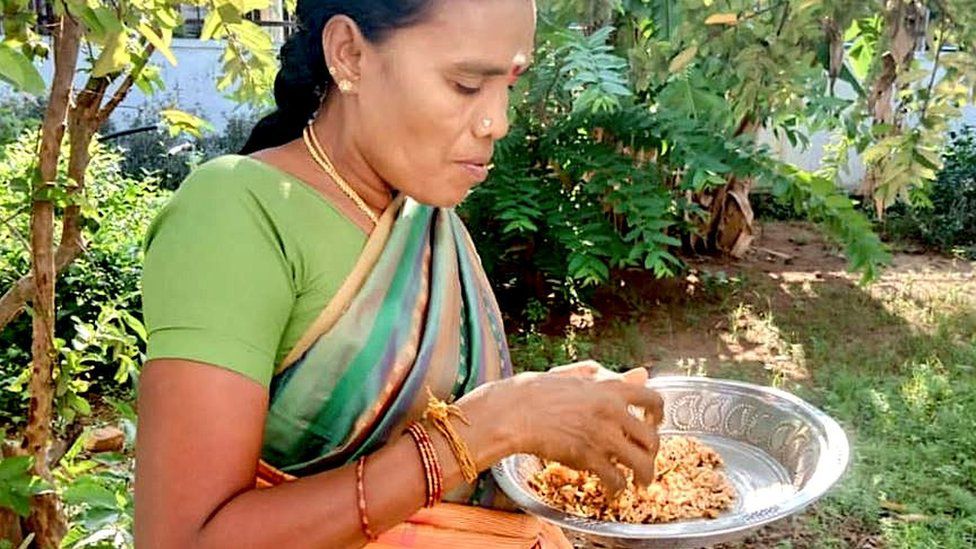
This 49-year-old woman lives near Chennai and belongs to one of the most marginalized communities in the country: she left school after the fifth year.
In India’s hierarchical caste-based social structure, their peers have suffered years of discrimination. Rani works for an NGO that rescues people from her community, the irules, who are trapped as bonded labourers.
“We always live outside the towns and villages. Our parents and grandparents told us that sometimes they had nothing to eat, not even tubers. In those difficult times, the rats provided us with much-needed food,” Rani told the BBC. .
“I learned how to catch them from a very young age,” he added.
The survival skills Rani learned as a child now help her own family eat: they cook rats at least twice a week.
The irules eat a species of rat found in rice paddies, not the ones typically found in homes.
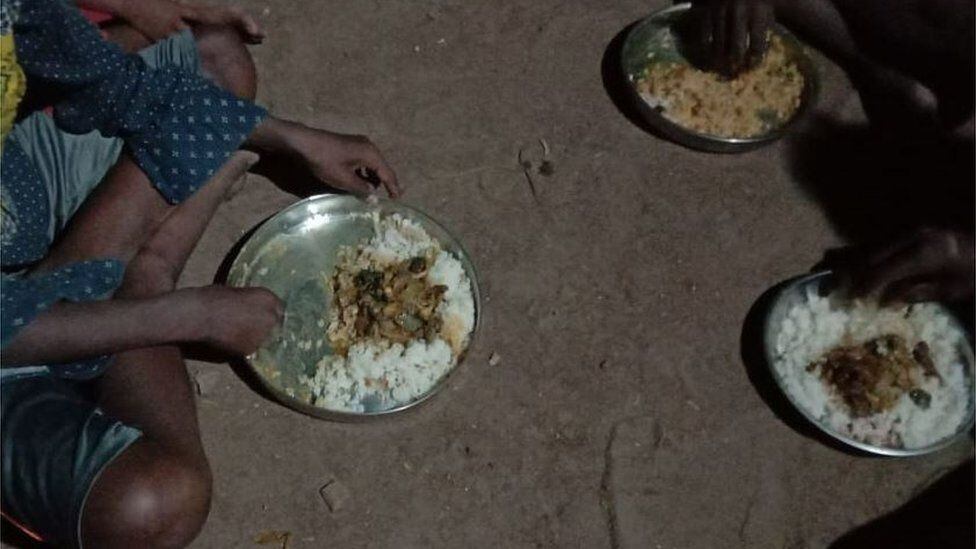
“We remove the skin, grill the meat and eat it. Sometimes we cut it into small pieces and cook it with lentils and tamarind sauce,” Rani said.
The grains that the rats hide in their burrows also serve as food for the irules.
“I can only afford to eat chicken or fish once a month. Rats are available in abundance and they are free,” he added.
“I drank muddy water and saw people eating meat from corpses”
The UN says Somalia is facing catastrophic famine and the country’s worst drought in 40 years has already displaced more than a million people.

Sharifo Hassan Ali, a forty-year-old mother of seven children, is one of the displaced.
He had to leave his village and traveled more than 200 kilometres, mostly on foot, from the Shabeellaha Hoose region to a temporary settlement on the outskirts of the capital, Mogadishu. He took five days.
“During the trip we ate only once a day. When there was not much food, we fed the children and we went hungry,” he said.
On the way to the capital, he witnessed some shocking scenes.
“The river has completely dried up. There has been little water for years, so we had to drink muddy water,” Hassan Ali said.
“I saw hundreds of dead animals on my way to Mogadishu. People are even eating the carcasses and skins of the animals.”
Hassan Ali used to have 25 cows and 25 goats. They all died in the drought.
“It doesn’t rain and nothing grows on my farm,” he said.
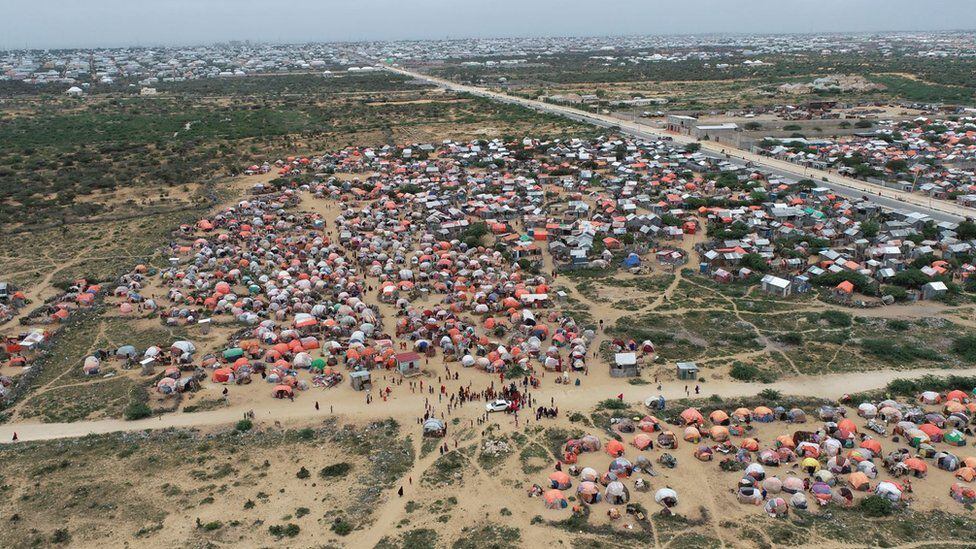
Now she earns less than $2 a day washing other people’s clothes, which is not enough to pay for food.
“I can barely buy a kilo of rice and vegetables with that money, and it’s never enough for everyone. This drought has been very hard on us,” he explained.
He receives some help from humanitarian organizations, but it is not enough.
“We have nothing,” Hassan Ali said.
“My children and I survive on red cactus fruits”
“There is no rain and there is no harvest. We have nothing to sell. We have no money. I cannot afford to eat rice.”
Fefiniaina is a 25-year-old mother of two from the island of Madagascar in the Indian Ocean.
Two years of low rainfall have destroyed crops and decimated livestock. That is pushing more than a million people toward starvation, according to the UN.
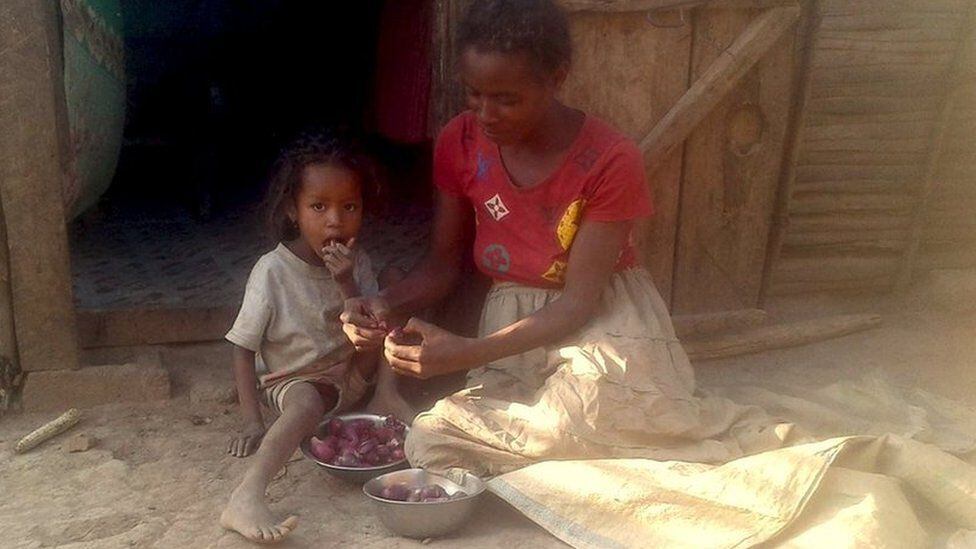
Fefiniaina lives in the town of Amboasary, one of the areas most affected by the drought.
With her husband they make a living selling water.
“When I earn money, I buy rice or cassava. When I have nothing, I have to eat the red cactus fruit or go to bed with nothing,” he told the BBC through a UNICEF translator.
“Most of the people here eat cactus fruit. It tastes a bit like tamarind,” he said.
“We have been eating it for the last four months and now both of my children are suffering from diarrhoea.”
The World Food Program reported last year that in southern Madagascar “people ate white clay with tamarind juice, cactus leaves and wild roots just to stave off hunger.”
The fruit may help keep the Fefiniain family alive, but it doesn’t provide the vitamins and minerals they need. Her four-year-old son is among the many being treated for malnutrition.
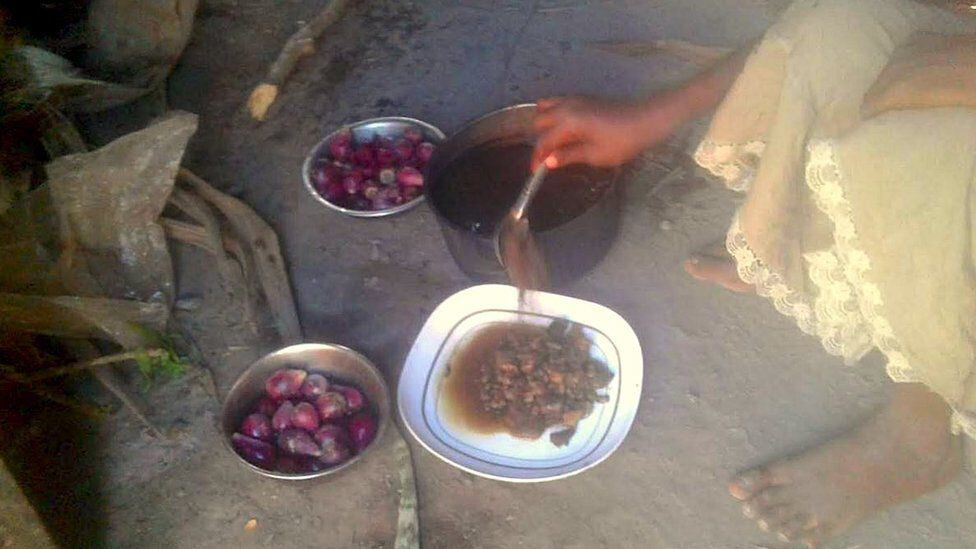
“Even if it rains a little bit, we can get some harvest. We can eat sweet potatoes, cassava and fruits,” Fefiniaina said.
“And we won’t need to eat cactus fruit.”
__________________________________
The World Food Program says the world is hungrier than ever.
He blames this “seismic hunger crisis” on four factors: conflict, the climate crisis, the economic fallout from the covid-19 pandemic, and rising costs.
“World Food Program’s monthly operating costs are $73.6 million above their 2019 average, a staggering 44% increase,” the 2022 report states. “The extra money now spent on operating costs would have previously fed 4 million people for a month,” he says.
But the organization says that money alone will not end the crisis. Unless there is a political will to end conflict and a commitment to contain global warming, “the main drivers of hunger will continue unabated,” the report concludes.
(Additional reporting by Felipe Souza)
Source: Elcomercio
I, Ronald Payne, am a journalist and author who dedicated his life to telling the stories that need to be said. I have over 7 years of experience as a reporter and editor, covering everything from politics to business to crime.

:quality(75)/cloudfront-us-east-1.images.arcpublishing.com/elcomercio/GE3TCMBNGEYC2MJWKQYDAORRG4.jpg)

:quality(75)/cloudfront-us-east-1.images.arcpublishing.com/elcomercio/GQN7YLEDZ5EGXBDIIJ7H7LYMK4.jpg)
:quality(75)/cloudfront-us-east-1.images.arcpublishing.com/elcomercio/FOXW4I7YX5C5XNZ4JS7ARU6ZHI.jpg)
:quality(75)/cloudfront-us-east-1.images.arcpublishing.com/elcomercio/ZW4ONEDPLJDP5IXAXN53535MFQ.jpg)
:quality(75)/cloudfront-us-east-1.images.arcpublishing.com/elcomercio/LDCA3MNU5FF5JJDIB7WFSF2UEY.jpg)
